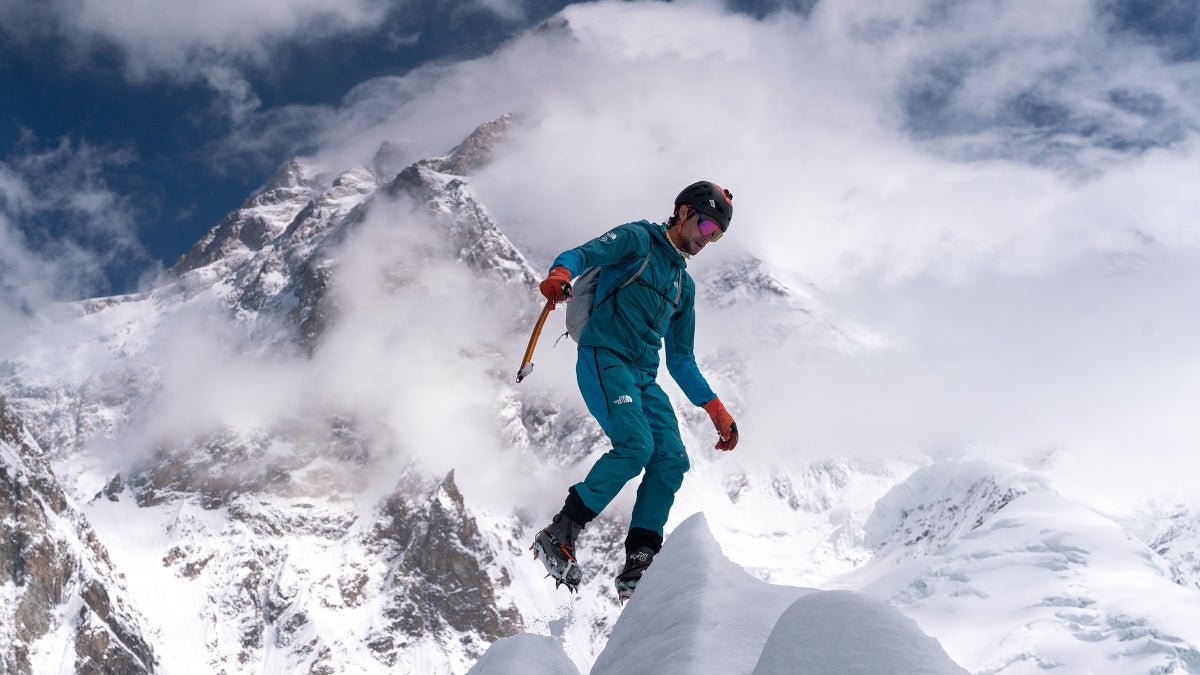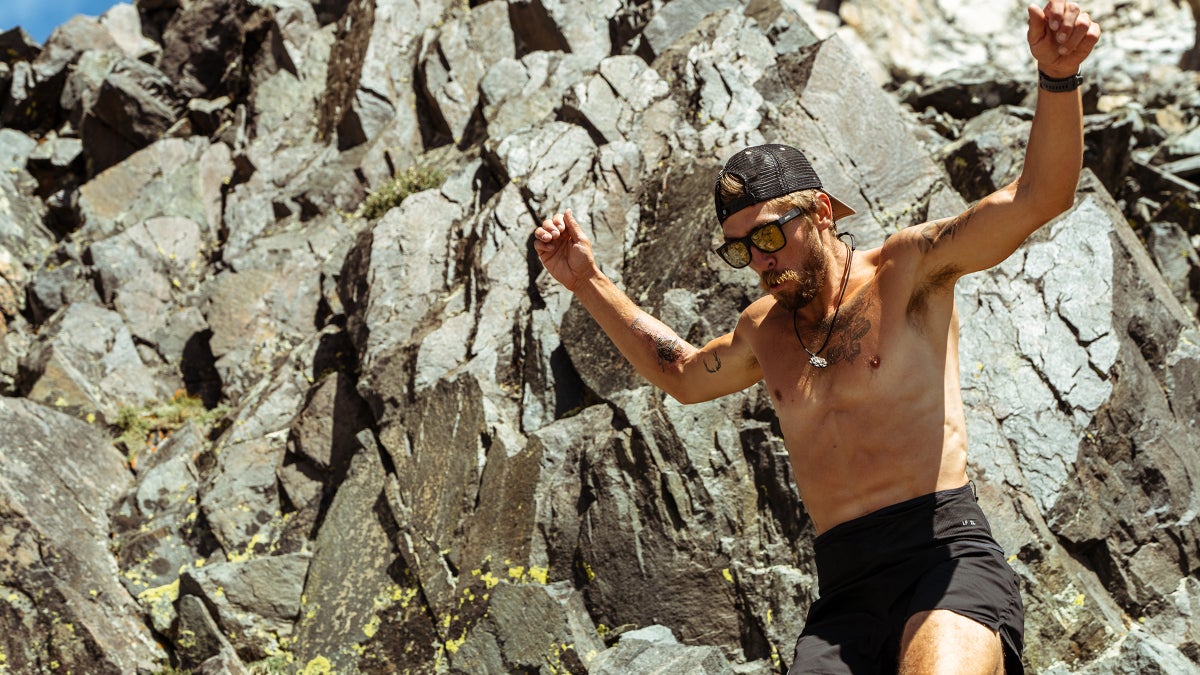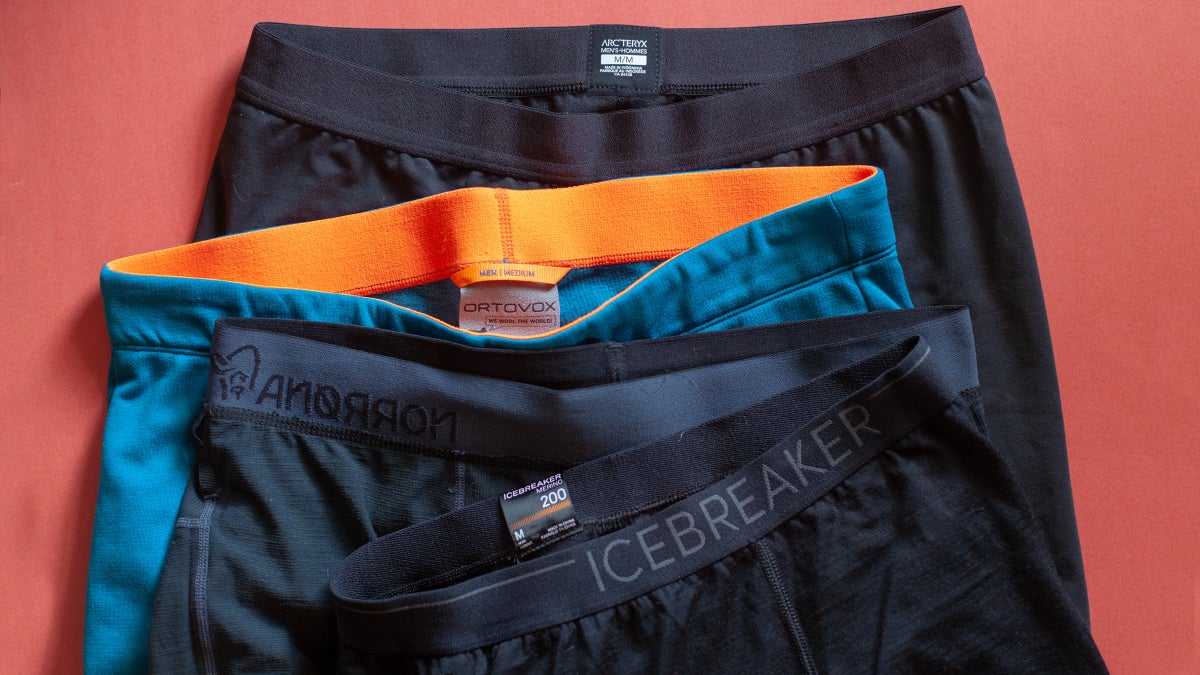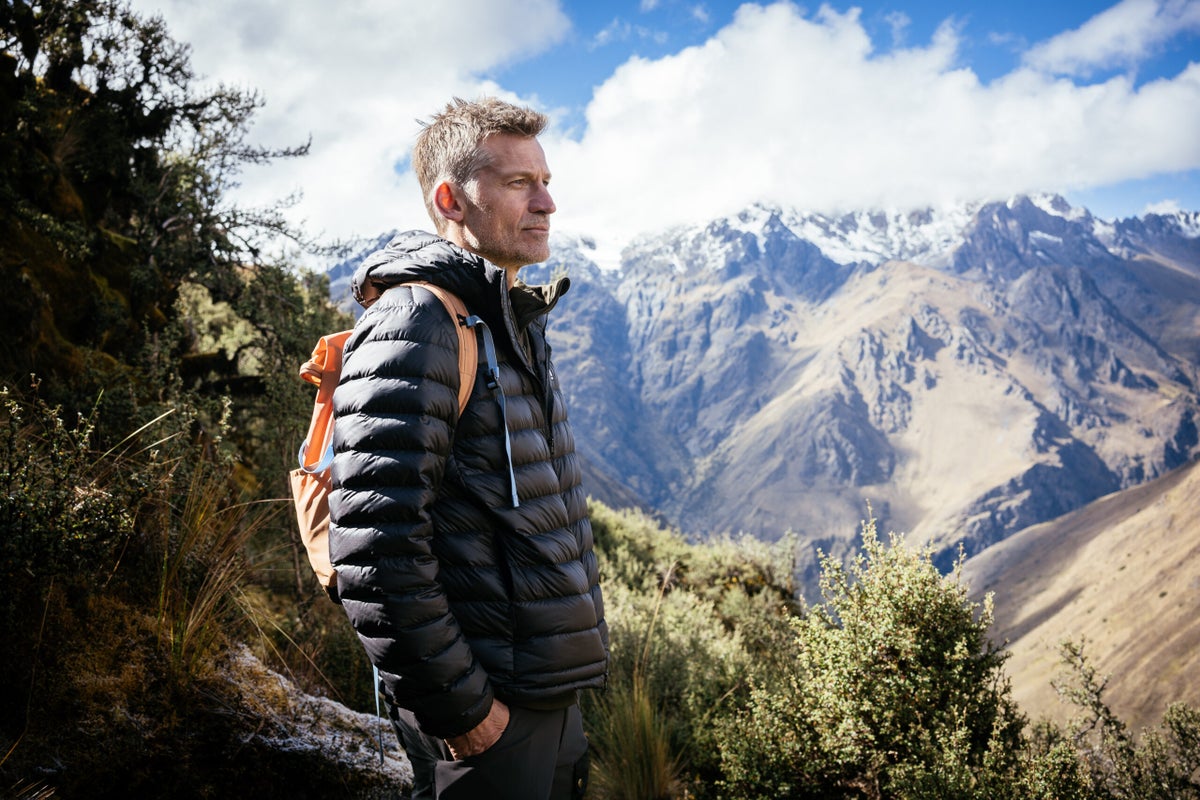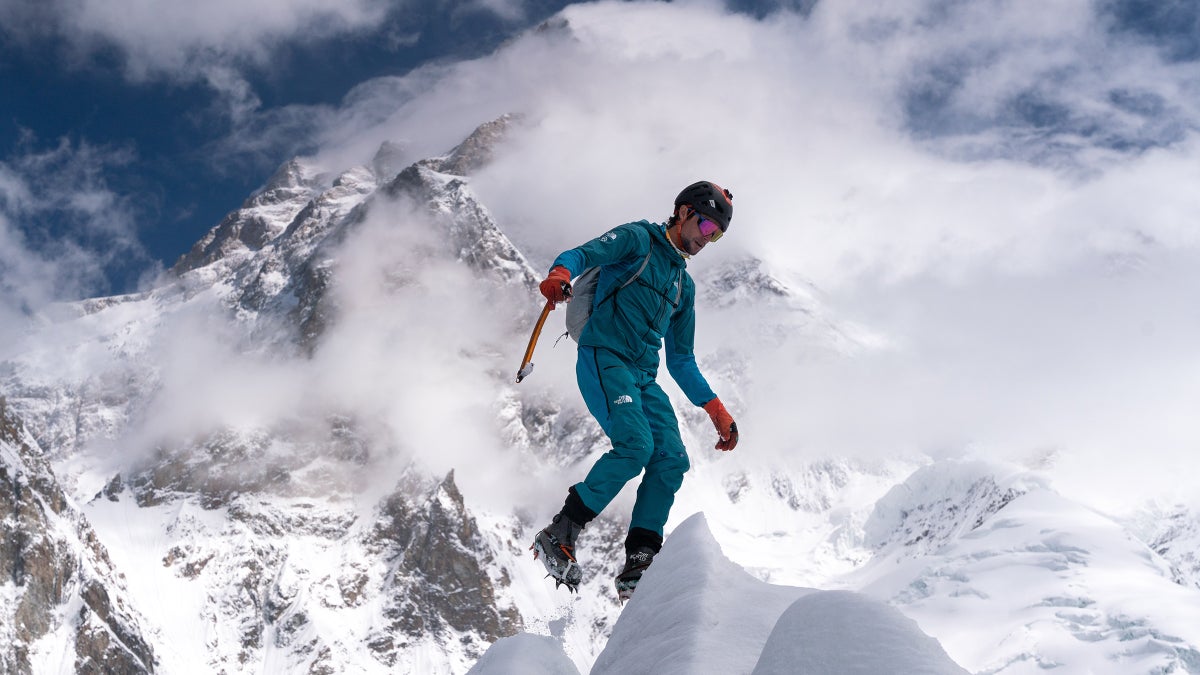
We’re living in a gilded age of adventure filmmaking.
That was the title of a feature story I edited for Outside Magazine a few years ago. The writer, Nick Heil, surmised that the outdoor industry’s best filmmakers had finally mastered the technology and techniques to produce truly meaningful documentaries—you know, the kind that win Academy Awards.
Filmmakers such as Jimmy Chin, Elizabeth Chai Vasarhelyi, Max Lowe, Nick Rosen, and others had achieved such a high level, Heil wrote, by focusing on the blocking and tackling of visual storytelling: character development, narrative arc, and yeah, making peaks and waterfalls and canyons look really cool.
I thought about Heil’s conclusion as I watched the new climbing film K2—Chasing Shadows, which I viewed at The North Face’s Denver, Colorado headquarters in September. My take: It’s not just the filmmakers who have become experts at this stuff. Athletes have, too.
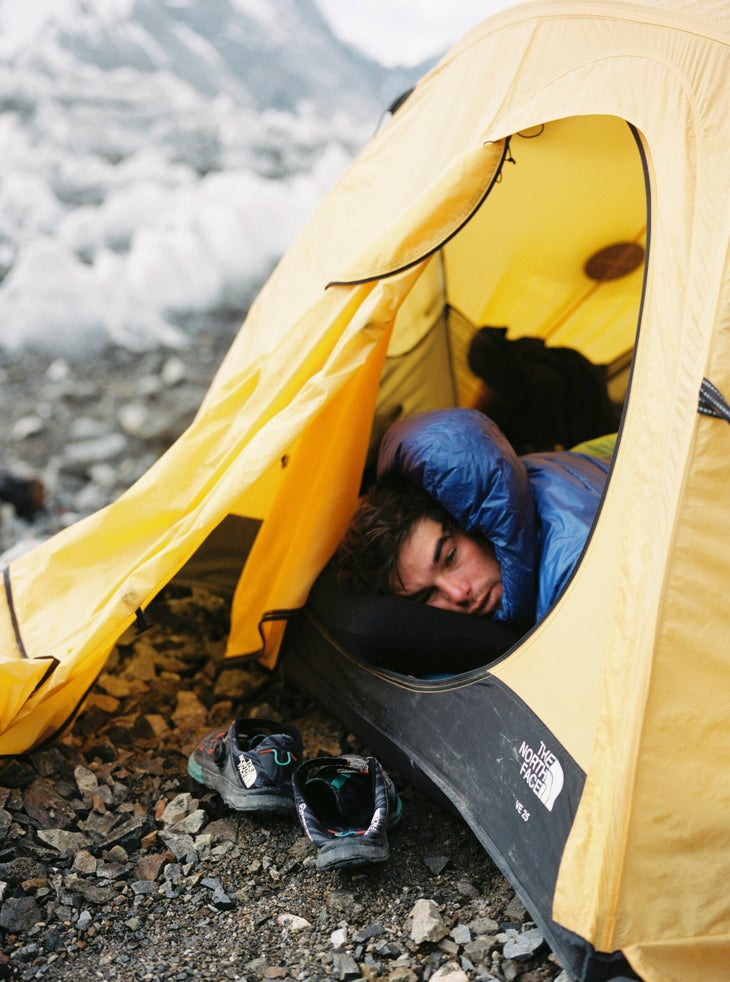
Directed by French filmmakers David Arnaud and Hugo Clouzeau, K2—Chasing Shadows follows the exploits of French alpinist Benjamin Vedrines as he attempts to set a speed record for ascending the world’s second-highest peak without supplemental oxygen in 2024. The record that Vedrines is chasing is mostly irrelevant to the narrative arc of K2—Chasing Shadows.
Instead, the film focuses on the internal demons Vedrines faces on the slopes of K2, perhaps the deadliest peak above 8,000 meters. Back in 2022, when he was the sport’s rising star, Vedrines nearly died after passing out just below the K2 summit. Luckily, other climbers found him unconscious and brought him to lower elevations, where he made a full recovery.
Throughout K2—Chasing Shadows, Vedrines provides a running dialogue of the innermost thoughts and emotions of returning to the place where he brushed death. He unpacks these feelings—terror, excitement, triumph, embarrassment—in real-time into GoPro cameras mounted to his climbing poles and helmet. It’s as though he’s seated in a psychotherapist’s chair—one that happens to be placed on the vertical slopes of K2.
Vedrines cries. He laughs. He works things out in real-time. Is it the thin air that makes Vedrines open up? Who knows. But by making his internal dialogue accessible, Vedrines crafts a story that would make Chin or Lowe or any of the other previously mentioned documentarians proud.
“My first goal was to be transparent and to just be myself with this movie, and to show another aspect of what some athletes live through,” Vedrines recently told Outside. “Sometimes, we experience a situation where you have pushed too much and gone too high and touched the limit, and this creates a lot of existential thought and big questions in your own mind.”
No, Vedrines does not own an advanced degree in filmmaking or literature. But he seems to have a preternatural ability to understand what the audience cares about.
“In the end, struggling with your own thoughts and your own personality can be a super powerful story,” he added.
Of course, a therapy session at 28,000 feet is boring if you can’t also view the peak in all of its terrifying splendor. And luckily, Vedrines is also a skilled visual storyteller. Yes, Clouzeau and Arnaud and the filmmaking crew deserve accolades for bringing the majesty and horror of K2 to life on the screen. But Vedrines deserves ample applause as well, because he shoots much of the footage himself.
The filming technique in K2—Chasing Shadows brings bring’s K2’s steepness to life in a way I have not seen in other films about the mountain. The method Vedrines and the team used is not entirely groundbreaking—they mounted a GoPro to his climbing helmet and pointed it downward.
But the perspective, when seen on a big screen, provides a dizzying view of the exposure climbers face on the peak. Suddenly, K2’s verticality becomes oh-so apparent. Vedrines looks down between his feet and sees the rock wall go down for thousands of feet. One wrong foothold, one bobble, one slip, and he is destined to fall for a while.
There’s another jaw-dropping visual element of K2—Chasing Shadows that’s tied to Vedrines and his climbing technique. In recent years, he’s made headlines for ascending high peaks without oxygen and then soaring off the summit with a paragliding setup.
We get to see what this looks like in K2—Chasing Shadows, and let me tell you, it’s an edge-of-your-seat experience. Vedrines makes several flights from the flanks of K2, including a harrowing one into a blinding blizzard. For each one, he films via his GoPro, and also from a drone flying next to him.
This footage is the best part of the entire film. You have no idea if Vedrines will sail safely out of the other side of the clouds, or fly smack-dab into a vertical rock wall.
K2—Chasing Shadows makes its international debut in November at France’s Montagne en Scene film festival. If you have the opportunity to watch it, I absolutely recommend you do.
I caught up with Vedrines recently to ask him about the film.
OUTSIDE: What technology and techniques did you use to bring K2 to life?
Benjamin Vedrines: I had a nice team of two cameraman, Seb Montaz-Rossetand Thibaut Marot, as well as the guys at base camp, and they were there to capture nice moments. Seb is very experienced in high-altitude filming, and this is why he was the guy with me doing the summit push. We also had very nice footage from the drones. You don’t have all of this level of footage the higher I went, because I was using my GoPro on my head, and one at my side. It is important for me to capture personal moments in these ascents. But filming this way is very difficult because you have to be focused on the climb, and also be focused on filming what is going on. I’ve done several expeditions on routes in the Alps where I’ve had to do this, and it has become a new passion of mine. Over the years, I have improved.
How do you balance the need to focus on climbing and staying safe on the mountain with capturing the moment for the film?
My cameramen have told me that I have a good eye for capturing important moments. My intuition is that when the climb becomes hard, that is the interesting part that people want to see. For example, I made an effort to capture the moment during the storm on K2 because I was alone, and it is a very deep moment. Yes, there are moments when I need to focus on saving my life and trying to stay alive. There are other moments where it is merely uncomfortable, so I can afford to capture it with a camera. I know those moments will be powerful and real.
Why is it so important for you to share the emotions you feel on the edge of a mountain?
It’s important to make the audience try and understand what I do. Otherwise, you don’t really have any story. The real emotions that alpinists like me are experiencing on a mountain can only be captured on our own, by ourselves. In many situations, I am the only one with the camera, and I am saying things that come from deep inside of me. I can’t worry that ‘oh, people will judge me.’ I have a feeling when I am alone that I can say anything. So, what I say is what I think.
The post The Latest Film About K2 Will Make Your Jaw Drop appeared first on Outside Online.










